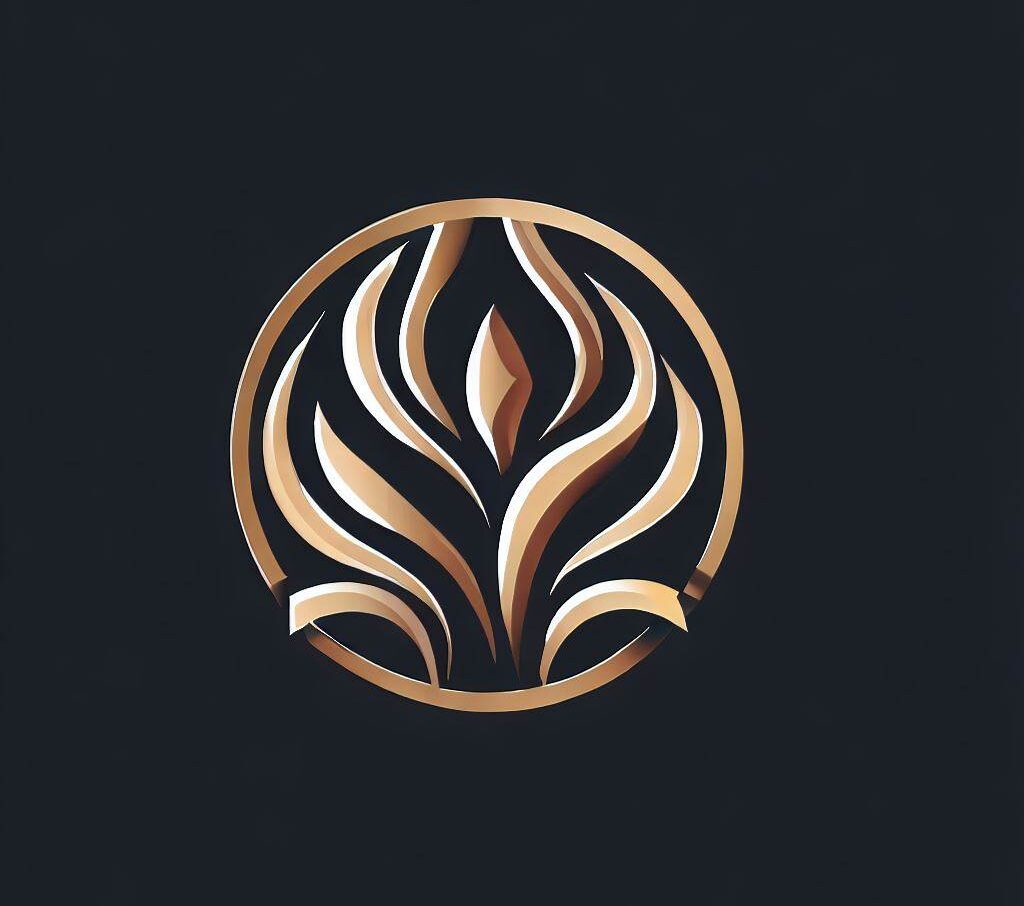The 6 point star holds deep biblical meaning, with its origins dating back centuries and its symbolism intertwined with religious beliefs. This symbol, also known as the hexagram or the Star of David, has been widely used in literature, jewelry, and religious artifacts. In this article, we will delve into the biblical significance of the 6 point star, uncover its historical roots, and explore its religious symbolism in the context of our faith today.
Key Takeaways:
- The 6 point star, also known as the hexagram or the Star of David, has deep biblical meaning.
- Its origins can be traced back to ancient times, with various interpretations and uses throughout history.
- While it is widely recognized as a symbol of Judaism, its association with Judaism is relatively recent.
- The 6 point star has been associated with ancient Egyptian and Babylonian paganism, as well as occult magic practices.
- There are diverse perspectives on the meaning and usage of the 6 point star in the Bible, including historical and controversial viewpoints.
The Hexagram: Origin and Symbolism
The hexagram, consisting of two intersecting triangles, has a rich history and symbolism in biblical texts. Its origins can be traced back to ancient times, with its first known appearance in the worship of pagan gods among the Israelites. The star was often associated with the worship of Ashtoreth and Chiun (Remphan), both pagan deities mentioned in the Bible. It is believed that these stars represented the planet Saturn and were used as symbols of idolatry.
The six-pointed star, also known as the Shield of David or the Magen David, made its way into the Jewish community in Prague during the 17th century. While it is now recognized as the primary symbol of Judaism, it does not have any biblical or Talmudic authority. In fact, its use as a religious symbol by the Jewish people is a relatively recent development.
According to the Universal Jewish Encyclopedia, the hexagram star is of ancient origin and was known to various ancient civilizations, including the Egyptians, Hindus, Chinese, and Peruvians. The symbol is described as two equally lateral triangles that are interlaced to form a hexagonal star. However, the Jewish Encyclopedia points out that the interlaced triangles are called the Shield of David only in Jewish sources, whereas non-Jewish sources refer to the symbol as the Seal of Solomon.
The Star Condemned in the Bible
“You also took up the tabernacle of Moloch and the star of your god Remphan, images which you made to worship; and I will carry you away beyond Babylon.” – Acts 7:43
This biblical passage from Acts condemns the worship of the star of Remphan, another name for the hexagram star. It is associated with idolatry and the false gods that the Israelites worshipped. The prophet Amos also speaks against the star in Amos 5:25-27, where he rebukes the Israelites for their worship of Sikkuth and Chiun, which likely referred to the same idolatrous star.
The Jewish Encyclopedia further lists various mentions of the six-pointed star, including its appearance in Arabic amulets, Byzantine magic texts, alchemy, stonemasons’ signs, and the coat of arms of the Freemasons. It is also referred to as the order of the seal of Solomon, linking it to the legendary biblical king known for his wisdom.
It is important to note that there are various interpretations and perspectives on the hexagram’s symbolism and historical significance. Some Orthodox Jewish organizations reject it as a symbol, claiming that it infiltrated Judaism from occultist practices, particularly through the Kabbalah in the 13th century. However, the symbol eventually gained prominence and became associated with Jewish identity, particularly during the Zionist movement in the late 19th century.
While the hexagram continues to be recognized as the Star of David and the primary symbol of Judaism, it is significant to acknowledge its historical roots and the diverse perspectives surrounding its usage and meaning.
The Star of David: Historical and Modern Significance
The Star of David, also known as the six-pointed star, holds biblical references and deep spiritual symbolism within biblical scripture. While it is widely recognized as the symbol of Judaism, its origins and significance go beyond the Jewish faith. Let us explore the historical and modern significance of the Star of David in biblical scripture.
Not Hebrew
In “The Jewish Connection” by M. Hirsch Goldberg, it is stated that the Star of David is not of Jewish origin and was never used as a religious symbol by the ancient Israelites. Despite its association with Judaism today, its historical roots lie outside of the Jewish faith.
An Islamic Connection
Interestingly, the Star of David was found embedded into a 1,200-year-old Muslim mosaic floor near Tel Aviv. This discovery reveals that the six-pointed star has a connection to Islamic culture rather than solely being a Jewish symbol (Goldberg, 1976).
An Ancient Symbol
The six-pointed star has been known to various ancient civilizations, including the Egyptians, Hindus, Chinese, and Peruvians. According to the Universal Jewish Encyclopedia, it is an ancient symbol that consists of two interlaced triangles forming a hexagonal star (1943).
The Idolatrous Star
Biblical scripture, such as Amos 5:25-27, condemns the worship of stars and mentions the Israelites carrying idols, including the star of their gods. This suggests that the hexagram star was associated with idolatry and pagan worship patterns during the Exodus of the Hebrews (Goldberg, 1976).
The Star Condemned in the Bible
In Acts 7:43, the star is mentioned again as an idolatrous image used for worship. This verse condemns the Israelites for taking up the tabernacle of Moloch and the star of their god Remphan, indicating the negative connotations associated with the symbol (Acts 7:43).
The Seal of Solomon
The six-pointed star is also referred to as the seal of Solomon in various sources. It is associated with King Solomon’s practices, which included building high places for pagan deities, as mentioned in 1 Kings 11:6-11 (Jewish Encyclopedia). This further highlights its historical and religious significance.
The Menorah was the Symbol of Israel
Prior to the prominence of the Star of David, the Menorah was the accepted symbol of Israel. However, during the 16th century, the six-pointed star began replacing the Menorah on synagogues and Jewish religious articles, as noted in the Jewish Encyclopedia. Non-Jewish sources refer to the symbol as the Seal of Solomon (Jewish Encyclopedia).
The Cabala
The six-pointed star is associated with Cabalistic practices, particularly with Isaac Luria, a prominent Cabalist of the 16th century. The Jewish Encyclopedia describes Luria’s involvement in mystic rituals and amulet writing, suggesting a connection between the symbol and occultism (Jewish Encyclopedia).
An Occultic Symbol
Besides its associations with Judaism, the six-pointed star has long been used as an occultic symbol. Historically, it has been connected to various magical practices and occult traditions, such as Zoroastrianism and Druid religion (Collins, 2016). Its use in occult circles highlights its mystical significance beyond religious contexts.
King David Never Used the Hexagon
Contrary to popular belief, there is no biblical or historical evidence to suggest that King David ever used the six-pointed star. The Jewish Encyclopedia clarifies that King David’s shield was believed to be engraved with either the name of God or the Menorah, not the hexagram (Jewish Almanac 44).
In conclusion, the Star of David, also known as the six-pointed star, encompasses rich biblical references and deep spiritual symbolism within biblical scripture. While its origins and history may be debated, its significance transcends Judaism and holds cultural, historical, and mystical associations that continue to captivate believers and scholars alike.
The 6 Point Star: Historical and Controversial Perspectives
The 6 point star, often associated with the Star of David, has historical and controversial perspectives that touch upon its origins, condemnations in the Bible, and associations with ancient symbols. The symbol, known as the hexagram, consists of two triangles, one turned upward and the other turned downward. Let’s explore the various dimensions of this emblem:
Not Hebrew
According to M. Hirsch Goldberg in his book, The Jewish Connection, the Star of David is not of Jewish origin and was never used as their religious symbol by the ancient Israelites. It became the emblem of the Jewish people in 1897, chosen by the Zionist Conference as the insignia of their movement. Each of the twelve tribes had its own symbol, and not one tribe used the Star of David.
An Islamic Connection
Interestingly, construction workers discovered a 1,200-year-old 6 point star embedded in a Muslim floor near Tel Aviv. This discovery suggests that the star may have Muslim origins rather than being exclusively Jewish. However, further research is needed to establish its true historical context.
An Ancient Symbol
The Universal Jewish Encyclopedia and The Jewish Encyclopedia both indicate that the six-pointed star has ancient origins predating Judaism. It was known to the ancient Egyptians, Hindus, Chinese, and Peruvians. Described as two interlaced triangles forming a hexagonal star, it held various meanings in different cultures.
The Idolatrous Star
“Did you offer Me sacrifices and offerings in the wilderness forty years, O house of Israel? You also carried Sikkuth your king and Chiun, your idols, the star of your gods, which you made for yourselves. Therefore, I will send you into captivity beyond Damascus,” says the Lord, whose Name is the God of Hosts.” – Amos 5:25-27
These verses from the book of Amos highlight how the Israelites worshipped a star as part of their idolatrous practices during their journey from Egypt to Canaan. This star, known as Remphan and Chiun, was condemned by God and resulted in their captivity.
The Star Condemned in the Bible
“You also took up the tabernacle of Moloch and the star of your god Remphan, images which you made to worship; and I will carry you away beyond Babylon.” – Acts 7:43
Acts 7:43 also references the worship of the star Remphan, indicating its association with idolatry and its disapproval in biblical texts.
The Seal of Solomon
The Jewish Encyclopedia lists various mentions of the six-pointed star, including its use in Arabic amulets, Byzantine magic texts, alchemy, stonemason’s sign, Coat of Arms in Freemasonry, and even as the seal of Solomon. Its association with King Solomon is significant, as it suggests a historical connection to the Jewish tradition, albeit not in the same form as the Star of David.
An Occultic Symbol
The use of the hexagram in occult practices throughout history is well-documented. In Zoroastrianism and Druid religion, it was associated with magical rituals and occult symbolism. It is important to note that many Jews rejected the Star of David as a symbol, considering it influenced by occultist practices, particularly through the 13th-century Kabbalah.
The False Messiah – David Al-Roy
The six-pointed star, also known as the Star of David, has its origin in the 17th century when a Jewish man named Menahem ben Duji attempted to convince his people that he was the Messiah. Changing his name to David Al-Roy, he amassed troops in Khazaria, Kurdistan, but was assassinated on his way to liberate Palestine. The star was attributed to him from the 13th century onwards and appeared on a Jewish flag in Prague in 1527.
Magical Symbol
The six-pointed star, also known as the hexagram, has been associated with magic and the occult. Its connections to ancient symbols, occult practices, and the influence of mysterious figures throughout history have led to its adoption as a magical emblem.
King David Never Used the Hexagon
Contrary to popular belief, there is no biblical or historical evidence to suggest that King David ever used the six-pointed star or hexagon as a symbol. The Menorah, traditionally associated with Judaism, was the accepted symbol of Israel until the 16th century when the Star of David began to replace it.
The Solomon Connection
The Star of Remphan, mentioned in Acts 7:43, is associated with King Solomon’s idolatrous practices, which caused God’s anger. Solomon’s worship of false gods, including Ashtoreth, or Astarte, reveals his departure from the Lord’s commands and signifies a connection to the star symbol.
While the history and meanings surrounding the six-pointed star continue to spark debate and controversy, it remains an enduring symbol with diverse interpretations and associations throughout religious and mystical traditions.
Conclusion
As we conclude our exploration of the biblical meaning of the 6 point star, we find that its historical roots and religious symbolism offer unique insights into our faith and its ancient origins. The six-pointed star, also known as the Star of David, has played a significant role in Jewish culture and is often associated with Judaism. However, its origins and symbolism extend beyond the Jewish tradition.
The six-pointed star, or hexagram, has been found in ancient Egyptian and Babylonian art, as well as in other cultures such as the Zoroastrians and Druids. In biblical texts, it is mentioned in connection with idolatry and the worship of pagan gods. The star’s association with pagan practices raises questions about its use as a religious symbol.
Furthermore, there are differing perspectives on the historical and religious significance of the six-pointed star. Some argue that it was not originally a Jewish symbol and was introduced into the Jewish community in Prague during the 17th century. Others believe that it has deeper mystical and occult meanings, rooted in Kabbalah and ancient magical practices.
Regardless of its origins and controversies, the six-pointed star continues to hold symbolic value for many believers today. For Christians, it represents the presence of the Trinity at creation, while for Jews, it serves as a powerful emblem of their faith and heritage. The star’s use in religious ceremonies, synagogues, and Jewish artifacts highlights its importance in contemporary Jewish culture.
As we reflect on the biblical meaning of the 6 point star, it is essential to approach the topic with an open mind and a discerning spirit. While historical and cultural context can provide valuable insights, ultimately, the significance of any religious symbol lies in the personal relationship and interpretation of each individual believer.
FAQ
Q: What is the biblical meaning of the 6 point star?
A: The biblical meaning of the 6 point star is a topic of debate among scholars. While it does not have a direct biblical reference, some interpret it as a symbol of the trinity or the presence of all three persons of the Godhead at creation.
Q: What is the origin and symbolism of the hexagram?
A: The hexagram, or 6 point star, has ancient origins and has been associated with various cultures and religions throughout history. Its symbolism can vary, but it is often seen as a representation of balance, harmony, and the union of opposites.
Q: What is the historical and modern significance of the Star of David?
A: The Star of David, also known as the Shield of David, has become the most recognizable symbol of Judaism. While its origins are not specifically Jewish, it has been adopted as a symbol of Jewish identity. It is often associated with the nation of Israel and the Jewish people.
Q: Are there any controversies or condemnations surrounding the 6 point star?
A: There have been controversies regarding the 6 point star, including claims that it has occultic origins and associations with idolatry. Some biblical passages mention the worship of stars and heavenly constellations as a form of idolatry.
Q: What is the conclusion regarding the significance of the 6 point star in biblical contexts?
A: The significance of the 6 point star in biblical contexts is open to interpretation and subject to individual beliefs. While it may have historical and cultural associations, its specific meaning and relevance for believers today may vary.
Source Links
- https://www.umc.org/en/content/six-pointed-star
- https://www.gospeldefenceleague.org/index.php/articles/158-the-real-story-behind-the-six-pointed-star
- https://www.bibletools.org/index.cfm/fuseaction/Audio.details/ID/3951/Six-Pointed-Occult-Symbol.htm






